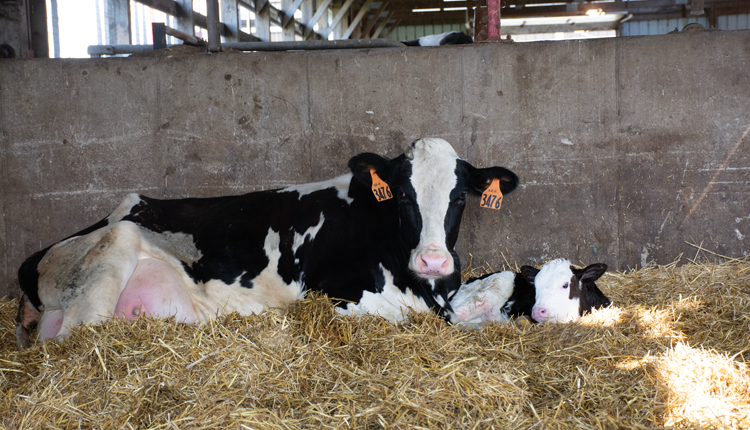
Colostrum is the keystone to a successful preweaning period, and making sure calves quickly receive a high-quality product is the best tool we have to support their future health. Even before that first meal is fed, there are steps we can take with pregnant cows to encourage greater production of an antibody-rich colostrum.
The quantity and quality of colostrum produced by fresh cows varies between dairies, so Cornell University’s Sabine Mann said we know there are on-farm things we do that affect colostrogenesis, which is the development of colostrum during the dry period. The associate professor at the school’s College of Veterinary Medicine described during a Cornell Cooperative Extension webinar that colostrum is 76% water and about 23% solids. “Solids are higher in colostrum than they are in mature milk,” she noted. This fraction is mostly protein, including antibodies (about 14% of the colostrum) and fat (5% to 7%), plus smaller levels of sugar (3%), minerals (less than 1%), and other components like micronutrients, growth factors, and enzymes.
Allowing sufficient time for colostrogenesis is crucial for the cow to move these components into the udder and condense them into colostrum. The all-important antibodies typically move into the udder in the last few days before calving, Mann said, but there is less known about the timing of the other nutrients’ transfer. Movement could occur during the entire dry period.
“When cows calve prematurely, they may not have had time to complete this process,” Mann explained. “When we alter our targeted dry period, we can affect colostrum yield.”
Consistent data has shown that a longer dry period results in more colostrum production. However, unless cows are dry for under 30 days, there is rarely a difference in colostrum quality between dry period lengths, Mann added.
Diet, age, season, and timing effects
Factors beyond dry period length also influence colostrum production. One of the most easily manipulated is the dry period diet.
Feeding moderate starch during the close-up phase has one of the most well-documented effects on colostrum by boosting production, Mann said. There is a little bit of a dilution effect with lower immunoglobulins (IgG) because of the greater quantity, but she said the trade-off is mild. On the other hand, Mann described that feeding more metabolizable protein doesn’t seem to have an effect on colostrum yield or quality.
There is evidence that fatty acid supplementation and attention to trace vitamin and mineral levels can lead to higher amounts of these components in the cow’s colostrum, but Mann admitted that we don’t know if the calf benefits from that. There is also some data that suggests choline may boost colostrum yield, though Mann cautioned that may be herd specific.
Further, animals may simply differ in production. Cows entering their second lactation will typically make the most colostrum, Mann said; cows older than that will often then taper off again. Parity does not necessarily influence colostrum quality. “Yes, heifer colostrum is different from cow colostrum, but it’s not poor quality per se,” she shared. Mann recommended testing colostrum from first lactation cows to determine quality just like with older cows.
She noted that her team is researching a phenomenon that dairy farmers may have experienced where cows produce more colostrum in the summer than the winter. They are exploring how light exposure and higher temperatures may encourage more colostrum. This trend means dairies may need to plan ahead to ensure a sufficient colostrum supply in the colder months.
Mann urged farmers to practice the same quality milking procedures as are used for the rest of the herd with fresh cows. There is no linear effect of time of harvest on IgG level up to 8 to 9 hours after calving, which is when quality rapidly declines. So, she noted that milking cows on a 3x schedule should work fine. Of course, in that scenario, a colostrum bank would be needed to feed calves in a timely manner.








